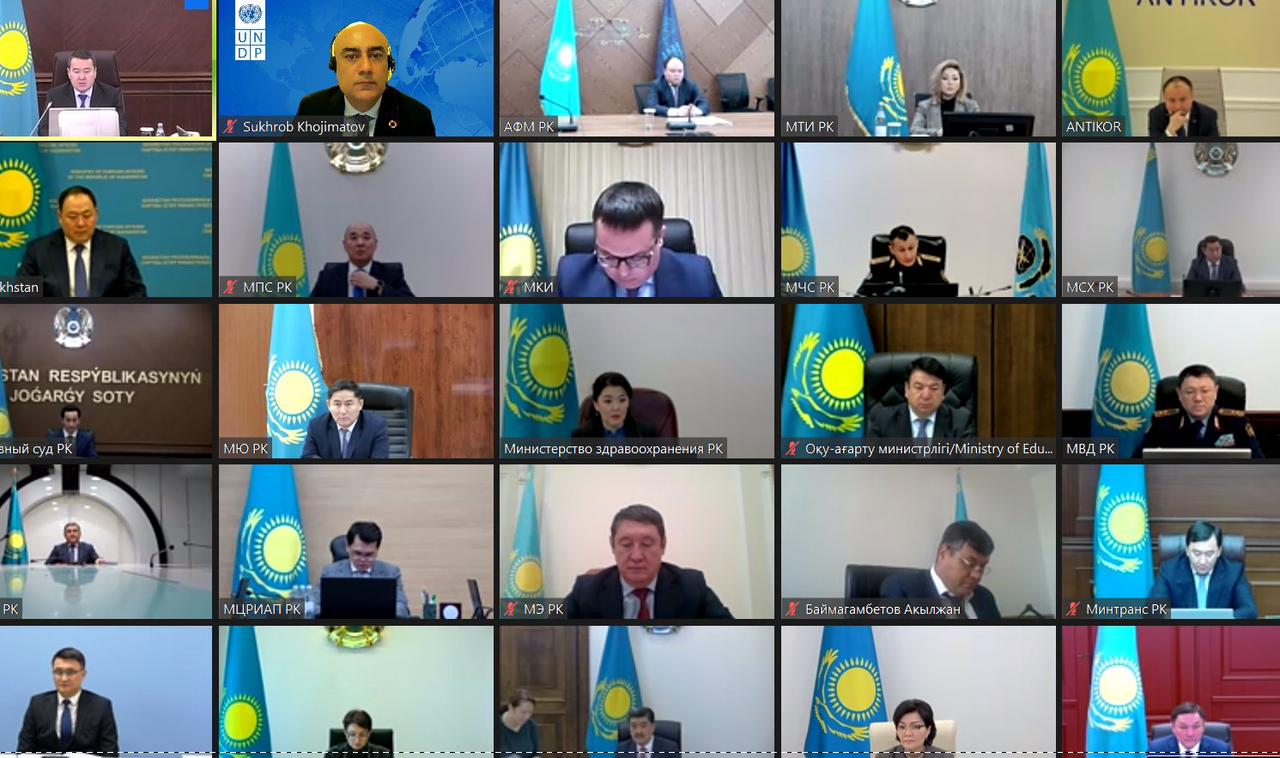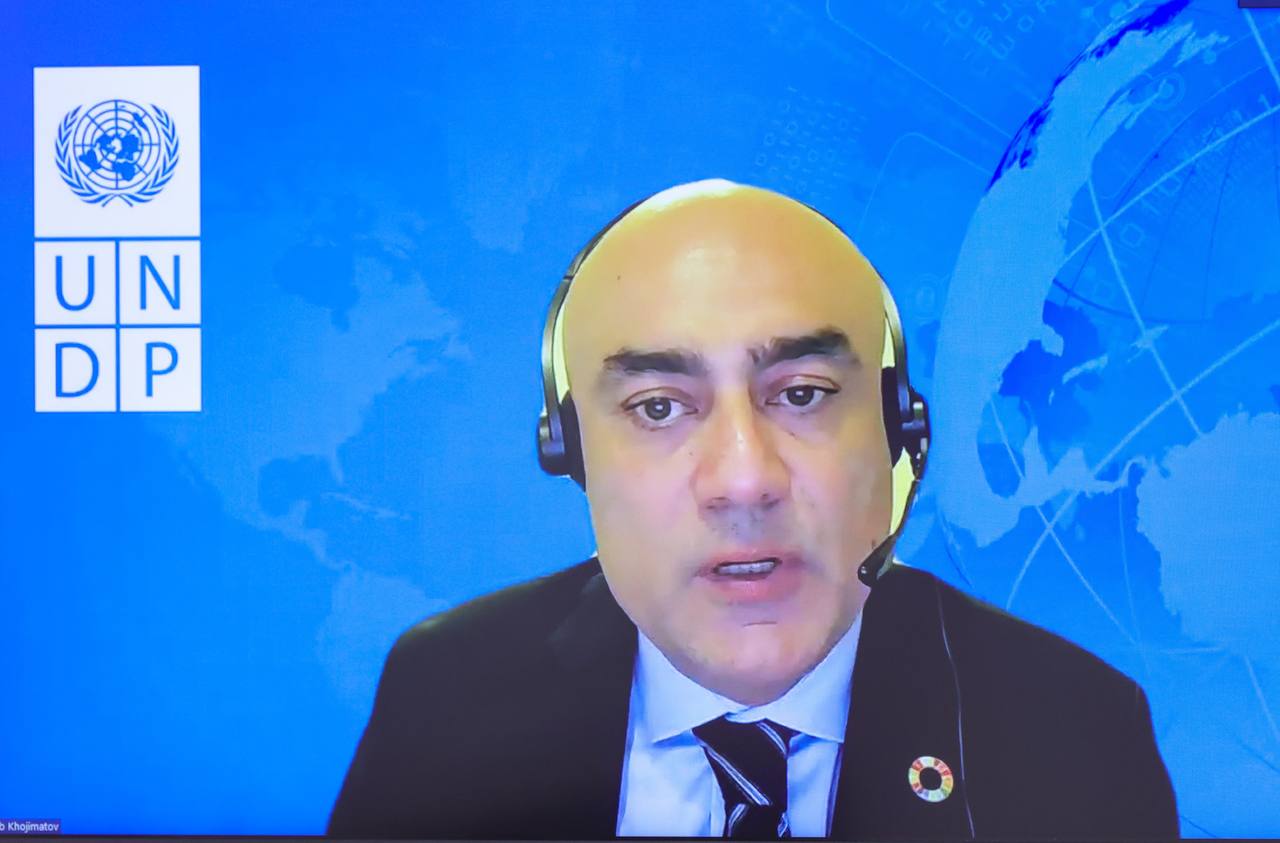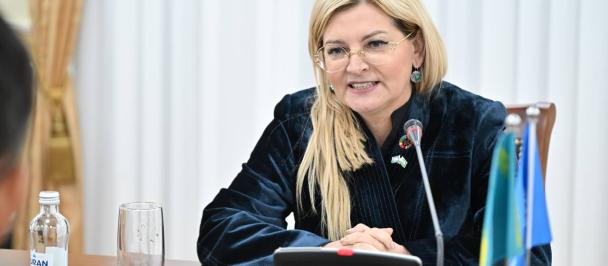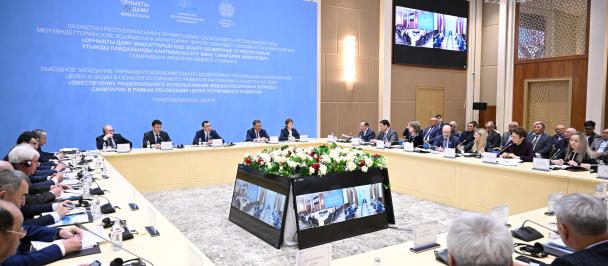Speech of UNDP Resident Representative a.i. in Kazakhstan Sukhrob Khodjimatov at the 7th meeting of the Coordinating Council for Sustainable Development Goals
January 5, 2024

Mr. Prime Minister,
Members of the Government,
Ladies and Gentlemen,
It is a great honor to participate in the 7th meeting of the Coordinating Council for Sustainable Development Goals.
Last year was marked by several important events.
Firstly, in September 2023, the President of the Republic of Kazakhstan, Kassym-Jomart Tokayev, attended the SDG Summit at the UN Headquarters in New York. During the summit, the President emphasized that the global climate, food, and energy crises pose significant threats to the sustainable development of countries. Despite being halfway to 2030, it was noted that countries are still far from achieving the Sustainable Development Goals. Getting back on track will require urgent measures, ambitious policies, and high involvement from the country's leadership.
Secondly, a high-level session on the SDGs was jointly organized with the Government of Kazakhstan as part of the newly launched Astana International Forum. During the event, priority issues related to achieving the SDGs in Kazakhstan were discussed, and valuable recommendations on accelerating efforts towards this goal were provided.
In 2023, we focused on two main areas: localizing the SDGs and providing support to the Parliament's Senate in establishing a Parliamentary Commission for monitoring the implementation of national goals and objectives in the field of sustainable development.
As part of the localization of the SDGs, UNDP, together with the Ministry of National Economy, conducted systematic work with local executive bodies in three pilot regions – Abai, Zhetysu, Ulytau, and the Kyzylorda region.

Two localization tasks were assigned.
Firstly, the training of akimat employees in sustainable development and, secondly, the development of a universal methodology for integrating the SDGs into local development programs.
This year, it is crucial for the work on localizing SDGs to move beyond the planning stage and into the design phase. The results and success of this work will play a vital role in determining the future potential of regions to develop sustainably. Upon analyzing and diagnosing various regions, it was found that out of the 17 SDGs, eight have been significantly lowly covered in the development plans of these regions.
The figures are disappointing – below 30 (thirty) percent.
Moreover, these SDGs are responsible for the social and environmental well-being of the regions. Areas such as poverty reduction, gender inequality, rational consumption and production, combating climate change, aquatic and terrestrial ecosystems, and the rule of law require more careful attention.
For example, in the Development Programs of the Zhetysu and Abai regions for the 8 SDGs, no relevant national indicator is integrated (SDG 1, SDG 5, SDG 7, SDG 8, SDG 9, SDG 13, SDG 14, SDG 17). Thus, the coverage of relevant national SDG indicators in Zhetysu is only 9.1% (8 out of 87), and in Abai, it is 11.5% (10 out of 87).
The coverage of relevant national SDG indicators in Ulytau is slightly higher, at 14.9% (13 indicators out of 87). Nevertheless, specific measures and activities are not envisaged for several strategic indicators, which calls into question their achievability. Thus, the share of the SDGs not covered by measures is 32.3%. A similar pattern is observed in the Development Plan of the Kyzylorda region.
Among other factors hindering a more complete alignment of Regional Development Programs with the SDGs, the following should be highlighted:
The central part of the indicators of the region's Development Programs is formed based on a basic list of indicators approved at the central level, which does not include national SDG indicators.
Most national SDG indicators are applicable only at the national level.
The list of SDG indicators applicable for integration at the local level has not been defined.
For individual indicators, local executive bodies are not responsible for data collection and do not monitor the situation.
At one of the meetings of the Parliamentary Commission, it was proposed to revise the list of national SDG indicators. The total number of priority and monitoring indicators alone is. For example, in OECD countries such as Denmark, Finland, France, and Germany, the total number of national indicators does not exceed 100. This allows us to build a more systematic and high-quality work to achieve the SDGs. Even developed countries do not have sufficient resources and capacity to monitor many indicators.
To improve the monitoring system of national SDG indicators, UNDP suggests the following steps:
First, select 2-3 key indicators for each SDG and use them to track progress on each goal.
Second, include these indicators in the documents of the first level of the State Planning System, such as the new Kazakhstan – 2050 Strategy and Kazakhstan's Strategic Development Plan for the next five years. These indicators should align with the priority areas of these documents.
Third, distribute the remaining indicators to central and local executive bodies to integrate them into national projects, strategic plans, and regional development programs.
Thus, it will be possible to establish a more effective and high-quality monitoring system focusing on results. In turn, the key national SDG indicators will be comprehensive. At the same time, the rest will have more local characteristics and aim to ensure inclusivity and improve the quality of life. Such a structure will provide a system in which the second and third-level indicators will work to achieve key indicators and SDGs.
Let me note that one of the most critical aspects of achieving the SDGs is the sufficiency and timeliness of financing for regional development. To ensure the effective localization of the SDGs, it is vital to optimize financial and budgetary transactions between the central and local levels. This year, UNDP will begin providing technical support to the Ministry of Finance to improve the efficiency of fiscal processes by enhancing the Unified Budget Classification. All this will contribute to a more effective coordination of financial resources for the needs of the regions and the achievement of the SDGs at the local level.
Mr. Prime Minister, the current work on the localization of the SDGs is carried out within the framework of the European Union’s regional project, “Creating an SDG platform for Central Asia.” I want to take this opportunity to express my gratitude to the EU Delegation to Kazakhstan for this significant contribution and hope for further partnership and support.
As you can see, there is a transition to the active phase of localization of the SDGs in the country’s regions. In this regard, along with the resources attracted from international organizations, involving public resources is imperative and essential.
We welcome the establishment of the Parliamentary Commission. From now on, the institutional architecture of the SDGs has acquired a complete look and increased its potential. The necessary measures and support from Parliament will currently support the Government's large-scale work in sustainable development. Integration and consideration of sustainable development principles in budgeting, lawmaking, and regional development can provide a qualitative breakthrough for the country in the remaining six years and lead to the set goals in 2030.
Mr. Prime Minister,
Regional development is essential for achieving the SDGs. However, many regions face significant challenges, including a shortage of financial and human resources, difficulties in planning the development considering sustainability principles, and poor coordination and communication with the local population.
As you can see, the localization of the SDGs is solely focused on solving these systemic issues. UNDP is ready to provide maximum assistance and support to the Government in developing newly recreated regions. Successful localization of the SDGs in these regions will allow for replication of this experience in other parts of the country. This will significantly bring the country closer to achieving the SDGs by 2030.
Thank you for your attention!

 Locations
Locations



